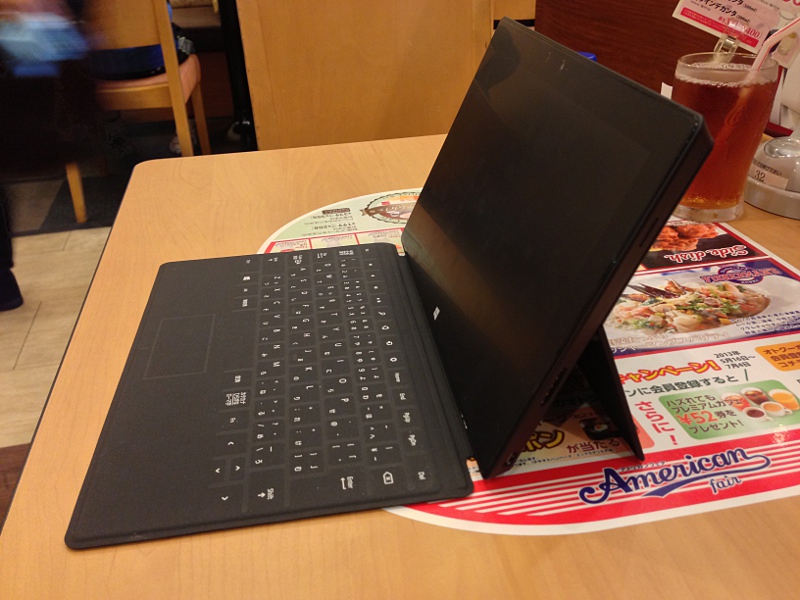

There are two USB-C ports on the Surface Pro, with a bespoke charging port too. Well, you can, because the magnets are strong enough to cling on to the tablet if you do pick it up by the keyboard, but it's not something we advise doing. As long as you remember that you can't pick it up by the keyboard, you'll be fine. It has been used on the train, sitting in corridors at CES and all without issue. People often ask about the lapability of a device like the Surface Pro, but this review is being written with Surface Pro on lap while flying. That means you need a little more space (depth) when compared to a 13-inch laptop, but generally speaking, the advantage Surface Pro offers is that it's lighter - and if you don't need the keyboard (because you're just watching a movie or using the Surface Pen for example), then it's a more compact package. When compared to a conventional laptop, there's a slight disadvantage in that the screen needs the kickstand for support, rather than being supported by the base of the laptop. There's a great finish and we like the simplicity of the design, the kickstand offering the flexibility to set the display at an angle that works for you.


The design of the Surface Pro is well known and Microsoft hasn't changed anything significant, sticking to that slightly chunky tablet with kickstand paired with a keyboard cover - in some cases finished with Alcantara, which we feel really does make for a premium choice and worth having.

According to Microsoft's figures, the Surface Pro 9 is good for 15.5 hours of use, while the Surface Pro 9 with 5G will see you through an impressive 19 hours. These minor points probably don't matter, it's the addition of 5G compatibility that will really make a difference, supporting nano SIM or eSIM, while also running with reduced heat (hence the lack of vents) and with greater efficiency.


 0 kommentar(er)
0 kommentar(er)
